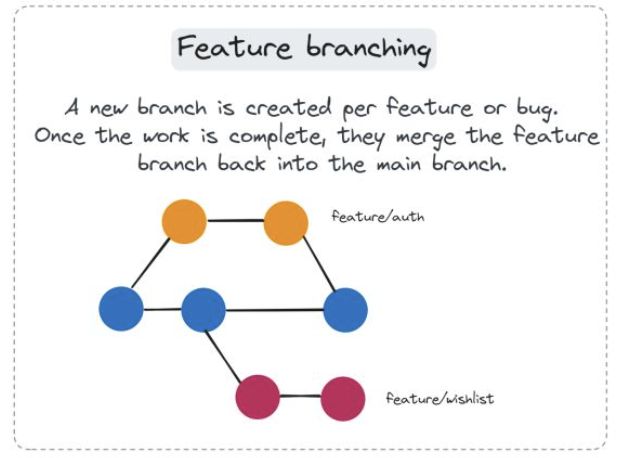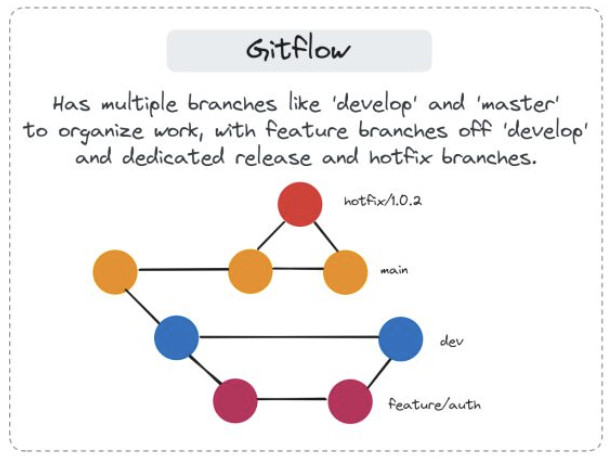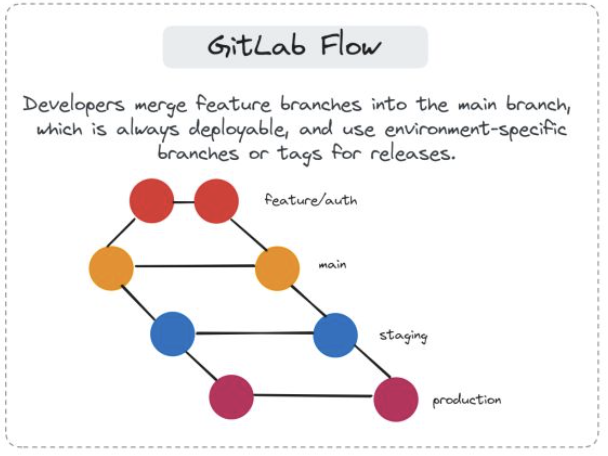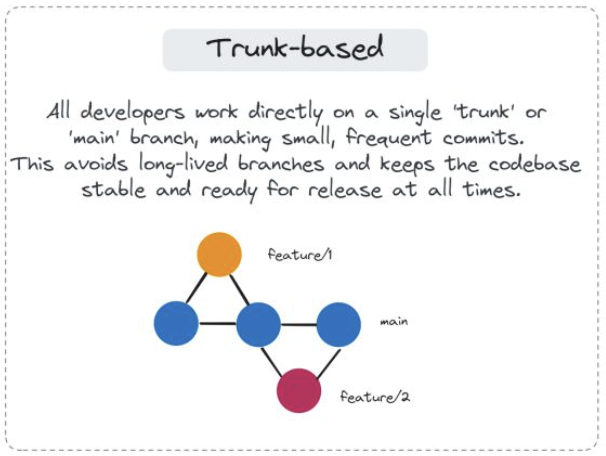
Git Branching Strategies
Matheus Gobbo Bernardi
Oct 02, 2024
When using Git, you are free to create as many branches as you wish and discover the strategy that best suits your needs. But let's be honest, we often end up following a pattern or strategy that has likely already been tested and approved by many other developers, projects, and companies. In this post, we will discuss a few popular strategies and dive deeper into each one!
5 Common Strategies
I don't like to waste time, so let's go over five common strategies for managing your branches, releases, and features.
1. Feature Branching

This process involves creating a dedicated branch for each new feature or bug fix, allowing developers to work in isolation without affecting the stability of the main codebase. Once development on a branch is complete, it undergoes thorough testing and peer review before being merged into the main branch—typically the "main" or "develop" branch. This approach ensures that only fully reviewed code is integrated into the core project, minimizing the risk of introducing errors.
This branching strategy is ideal for teams that prioritize strict code reviews, enforce quality standards, and work on features or bug fixes independently.
2. Gitflow

This branching model establishes a disciplined workflow for managing releases by introducing distinct branch types such as develop, release, hotfix, and feature branches to streamline the development process. It helps organize work efficiently, ensuring each branch has a specific role in the software lifecycle.
Gitflow is particularly well-suited for large projects that follow scheduled release cycles, where managing complexity and maintaining stability are crucial.
3. GitLab Flow

This strategy merges concepts from Feature Branching and Gitflow while simplifying the workflow. It places a strong emphasis on deployment and seamlessly integrates with issue tracking and continuous deployment practices. The approach includes a main branch that always reflects production-ready code and allows for optional branches for different environments (such as staging or production).
It is particularly suitable for teams leveraging GitLab's integrated tools and aiming to fully embrace continuous deployment (CD) practices, making it easier to automate and manage releases efficiently.
4. GitHub Flow

This is a lightweight, branch-based workflow designed to support simplicity and effectiveness in continuous deployment. Its primary focus is on maintaining the main branch in a consistently deployable state. Developers create feature branches from the main branch, and changes are reviewed and merged back through pull requests, ensuring quality without adding unnecessary complexity.
This workflow is particularly well-suited for small teams or projects that prioritize frequent deployments, as it encourages rapid iteration, efficient code review, and minimal overhead in managing branches.
As GitHub Flow is one of our favorite strategies, we wrote an article exploring its documentation and how to implement it.
5. Trunk-Based Development

In this strategy, all developers commit their changes directly to the main branch, often referred to as the "trunk." Feature branches are either short-lived or avoided entirely, promoting a streamlined approach to code integration.
This method is ideal for teams practicing continuous integration and delivery, as it ensures all changes are incorporated rapidly and consistently. It works particularly well for projects where quick development and frequent updates are a priority, enabling faster feedback loops and reducing merge complexities.
Which Strategy is the Best?
Each branching strategy has distinct strengths, balancing control, flexibility, and speed differently. The choice depends on the team's size, the project's complexity, and its development and deployment needs. In the end, you will probably try to follow one of these strategies, but I bet you will mix some of them to create something that works best for your project!
How We Work
At Beyonders, we mix GitHub Flow and Feature Branching. Since we like to make the deployment process quick, easy, and secure, we value the flexibility of having a clean main branch with frequent deploys. We also have an article where we discuss the GitHub Flow strategy extensively, so if you like it, don't hesitate to read more here.
This post was inspired by one of Dr. Milan Milanovic's LinkedIn articles. Thanks for the insights, Dr. Milanovic!
Recent Posts

Mar 12, 2025
How to choose the right mobile app dev agency
Struggling to choose the right mobile app dev agency? Learn how to define goals, evaluate expertise, and balance cost vs. quality for a successful app!

Oct 07, 2024
Github Flow Branching Strategy
A complete and easy to use branching strategy. In this post we will go through its details and how to apply it in your repositories.

Jun 13, 2024
Jacob Nielsen's 10 Usability Heuristics for UX Design
Elevate your user experience design with these 10 crucial principles! Take a look to dive deeper into each heuristic and learn more about User Experience.
